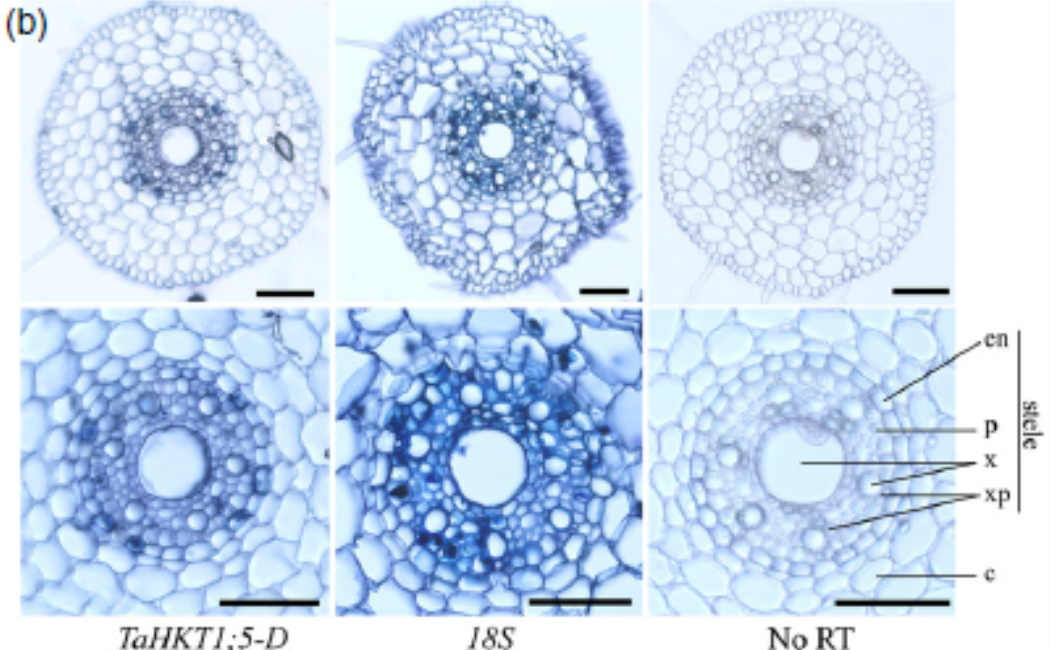
01 October, 2014
Bread wheat (Triticum aestivum L.) has a major salt tolerance locus, Kna1, responsible for the maintenance
of a high cytosolic K+/Na+ ratio in the leaves of salt stressed plants. The Kna1 locus encompasses a large
DNA fragment, the distal 14%
of chromosome 4DL. Limited recombination has been observed at this locus
making it difficult to map genetically and identify the causal gene. Here, we decipher the function of
TaHKT1;5-D, a candidate gene underlying the Kna1 locus. Transport
studies using the heterologous
expression systems Saccharomyces cerevisiae and Xenopus laevis oocytes indicated that TaHKT1;5-D is a
Na+-selective transporter. Transient expression in Arabidopsis thaliana mesophyll protoplasts and in situ
polymerase chain reaction indicated that TaHKT1;5-D is localised on the plasma membrane in the wheat
root stele. RNA interference-induced silencing decreased the expression of TaHKT1;5-D in transgenic bread
wheat lines which led to an
increase in the Na+ concentration in the leaves. This indicates that TaHKT1;5-D
retrieves Na+ from the xylem vessels in the root and has an important role in restricting the transport of
Na+ from the root to the leaves in bread wheat. Thus,
TaHKT1;5-D confers the essential salinity tolerance
mechanism in bread wheat associated with the Kna1 locus via shoot Na+ exclusion and is critical in
maintaining a high K+/Na+ ratio in the leaves. These findings show there is potential
to increase the salinity
tolerance of bread wheat by manipulation of HKT1;5 genes.